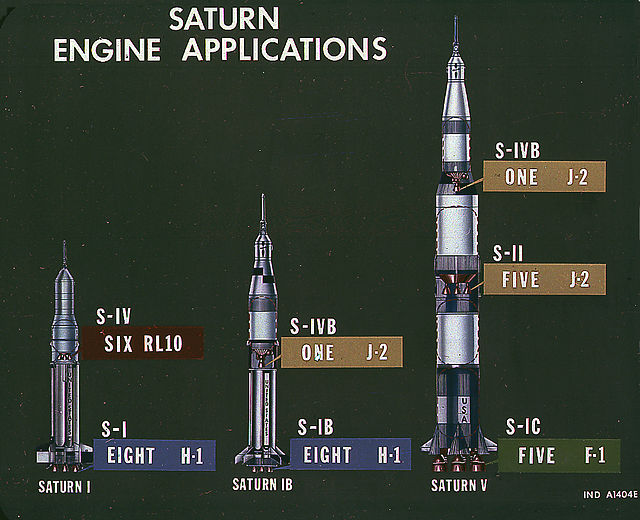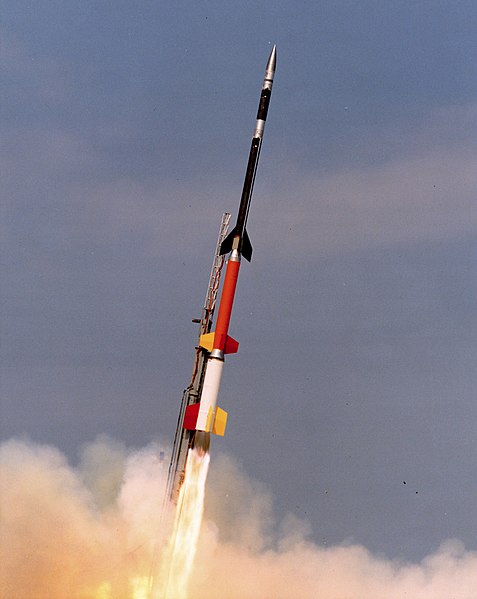The Saturn family of American rockets was developed by a team of former German rocket engineers and scientists led by Wernher von Braun to launch heavy payloads to Earth orbit and beyond. The Saturn family used liquid hydrogen as fuel in the upper stages. Originally proposed as a military satellite launcher, they were adopted as the launch vehicles for the Apollo Moon program. Three versions were built and flown: the medium-lift Saturn I, the heavy-lift Saturn IB, and the super heavy-lift Saturn V.
Three variants of the Saturn family which were developed: Saturn I, Saturn IB, and Saturn V
Jupiter C launching Explorer I (1958)
Juno II launching Pioneer IV on March 3, 1959
Saturn C-3
A multistage rocket or step rocket is a launch vehicle that uses two or more rocket stages, each of which contains its own engines and propellant. A tandem or serial stage is mounted on top of another stage; a parallel stage is attached alongside another stage. The result is effectively two or more rockets stacked on top of or attached next to each other. Two-stage rockets are quite common, but rockets with as many as five separate stages have been successfully launched.
Each stage of the Black Brant 12 sounding rocket has its own set of tail fins.
The second stage of a Minuteman III rocket
Cutaway drawings showing three multi-stage rockets
Apollo 11 Saturn V first-stage separation








